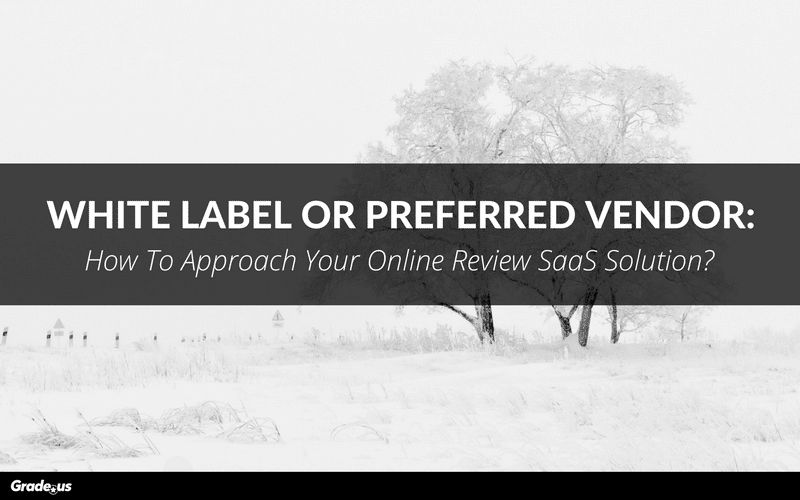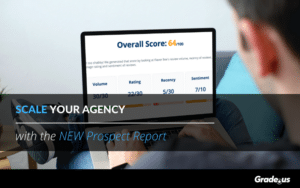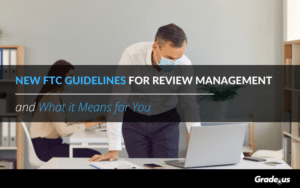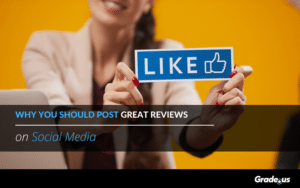Your client is going to ruin everything.
You’ve worked hard to get them to where they are now. You’ve sent an army of customers their way. They’ve seen a dramatic increase in their sales and revenue. Because of your hard work and your client’s willingness to trust you.
But for one reason or another your client’s negative reviews are on the rise. Customers are leaving hostile, sometimes nasty reviews about your client.
Your hard work is fading away.
This disaster is a threat to your client’s survival and an implicit black mark on your portfolio. Like it or not, their failure reflects badly on you because they’re your client.
It’s completely unfair, I know.
Your client wants you to do something. They want a crisis management plan – something to stop the negative reviews. But they also want a way to eliminate the damage in the future.
You know enough about review management to be dangerous, but it’s not your core business. You may not be – but right now it feels like you’re in over your head.
You need help to dig your client out of this mess
A SaaS Online Review Management and Marketing tool can help you avoid a lot of unnecessary headaches. The question is, do you look for something you can white-label or go with the preferred vendor option?
Which one is right for you and your client?
The right solution gives you…
The ability to manage your business and your client relationships the way you need to. What does that mean?
White labeling is probably a good fit if…
- Your agency is (or will be) a one stop shop
- You’re bundling the white label product with your services
- You’re bundling white labeled products with your products
- You have a unique system, process or strategy you use with the products you’ve white labeled
- You want your clients to have the ability to self manage their online review management and marketing while you act as a consultant
If you plan on giving your clients more help, service or support, white labeling is often the better choice. If clients need help, they come to you – you’re paid for your expertise.
Acting as a preferred vendor is a good idea if…
- You want to focus on your core business
- You’re looking to sell online review management and marketing services, (where you’re doing the management) using a preferred vendor behind the scenes
- You don’t want to give your clients full white label access.
Acting as a preferred vendor gives you the tools you need to manage your client’s reputation; the right solution gives you the tools you need without having to give clients full white label access. It’s not as transparent, but it doesn’t have to be if you’re providing A to Z support.
These options come with hidden problems
When you’re choosing between white labeling or acting as a preferred vendor two problems come into play.
As an agency there are two kinds of client relationships
1. Constrained relationships. I have to stay with my agency.
2. Dedicated relationships. I want to stay with my agency.
Constrained relationships have some kind of economic moat, a competitive advantage that makes leaving painful for your clients. Think Coca-Cola’s secret recipe, Google’s search algorithm, Amazon’s One Click and Prime programs, etc.
Walking away from these providers tends to be very painful.
They’re an entrenched part of your life so losing them means you lose a lot of other significant benefits.
Dedicated relationships on the other hand, last longer than pure constrained relationships. Think about the fanatical loyalty displayed by Apple, Harley Davidson and Tesla customers.
Relationship is the foundation. These customers believe in the company they support. There’s intimacy and closeness. These customers believe they’ll be protected, that the brands they follow will serve and take care of them.
While it’s ideal to have both, that may not be the case for you right now. Your client’s relationship with you and your agency should play a heavy role in the options you choose.
What you choose affects your outcome
Do you have to pursue dedicated relationships with your clients? Or do you have more of a constrained relationship with them?
- Clients in dedicated relationships tend to value transparency, benevolence and integrity very highly. The closer the relationship the greater the expectation of openness and transparency. White labeling may leave these clients feeling hurt and betrayed. A preferred vendor relationship where you recommend products and services is more likely to go over well.
- Clients in constrained relationships tend to be more utilitarian about how they approach the relationship. They’re focused on the benefits and results they enjoy. They’re more likely not to question your white labeled solution, as long as they continue to enjoy the amazing results they’ve come to expect from you.
This makes the decision making process easier if, you’re only thinking about your clients.
But what about you?
Your choice helps or hurts your business
If you decide to white label, the financials and logistics should make sense for your business. But where do you start?
You start with…
1. Expenses. What does it cost to white label your product of choice? How will you pay for it (e.g. revenue sharing, incremental pricing, fixed price, etc.).
2. Revenue. Do you/will you have the revenue to support white labeling? What’s your ‘break even’ point if you do decide to white label this product?
3. Profit. Will your net profit margins be strong enough to actually support white labeling in the long term? You probably know revenue, profit and cash flow are different things, but it’s easy to fall into the trap of treating them as the same thing.
4. Logistics. Do you have a system or process in place to manage the products you white label? Logistics planning requires you to plan for physical items (e.g. materials, software, licensing, etc.) as well abstract items (e.g. production, security, management, labor, etc.).
Profit margins in each business and industry vary. The obvious point here is this:
There should be an initial financial upside to white labeling.
If there isn’t, it’s a bad idea to move forward. Some companies choose to operate at a loss initially, hoping to recoup returns later. One of the financial upsides of white labeling is the ability to scale. With white labeling, the time it takes to manage a client’s account is dramatically reduced. You can offload review management tasks onto the client, while remaining available for consulting. White labeling allows the client to completely self manage their online review management and marketing.
This means you can handle a larger volume of clients.
But unless you have a verified plan to recover that investment, you’re better off acting as a preferred vendor.
Acting as preferred vendor means you can offer reputation management services which would, in most cases, require an account manager. The good news? This could create a huge increase to your billable hours. The bad news? It reduces the volume of clients you’re able to bring on, due the the time resources required to be effective.
Still, it comes with benefits:
1. More revenue less risk. As long as your industry allows it, you’re able to collect affiliate income and referral fees from your vendor partners without getting tied up in a restrictive agreement or taking on significant risk.
2. More profit. Infusionsoft sells CRM software. Their customers pay large sign-up and monthly fees, then they pay a consultant an additional fee to setup and manage their account. This approach works well if you’re looking to minimize the risk your agency takes on.
3. No dramatic changes required. If you’re already handling a client’s marketing and advertising campaigns, there typically isn’t a change to the nature of your relationship. Your provider is simply another tool in your box.
Acting as a preferred vendor and white labeling both come with incredible benefits – if you have a handle on the details. If it makes financial and logistical sense for your business, you can go for it. Just be sure to choose the model that’s right for your business.
What do you tell your clients?
Are you transparent with them about the fact that you’re white labeling another company’s product or service? Or do you say nothing?
If you tell clients you want them to use another company’s product, will they leave you?
It all depends on the kind of relationship you have with your clients. Constrained and dedicated relationships each come with a different set of rules to follow.
Coca-Cola has a large amount of dedicated customers. When they changed their secret formula in 1983, their dedicated customers were outraged. They were flooded with 400,000 angry calls and letters. A Coca Cola, hired psychologist listened in on calls, telling execs that customers sounded as if they were grieving the death of a loved one.
Netflix decided to spin their DVD business off into a separate company called “Quikster.” Their constrained customers felt betrayed. Netflix proposed changes that dramatically altered the results they were used to receiving. They lost 800,000 members as a result.
The minute you include customers in your business, it stops being just “yours,” becoming “ours.”
What if you make the wrong decision?
What if you white label a product for your agency and it all goes wrong?
Easy.
You run the numbers, prep your clients then run a pilot program. You purchase both options and test out on a small segment of your client roster, choosing to work with your loyal clients.
If you’ve decided to fill your clients in on the details, you do so, limiting what you share to the trustworthy clients in your pilot program. If you haven’t decided to share, you update your agreements and legal docs to reflect the changes.
If one program performs better than the other and it’s profitable, you do a soft roll out to the next segment of your client roster. If it’s a disaster, you terminate the loser.
This enables you to win (or fail) privately, before you decide to roll things out company-wide.
Your client can’t ruin everything…
…if you’re ready for the unforeseen mistake.
You’ve worked hard to get them to where they are now. An army of customers, a dramatic increase in their sales and revenue.
Continue giving them the care, guidance and protection they need, and you’ll protect them from the inevitable negative reviews, bad PR, and reputation disasters that come their way.
Acting as a preferred vendor, white labeling; these options give you the weapons you need to protect them from the hostile and nasty reviews headed their way. But only if you prepare now.
Are you ready?
About the Author
Andrew McDermott
Andrew McDermott is the co-founder of HooktoWin. He shows entrepreneurs how to attract and win new customers.










